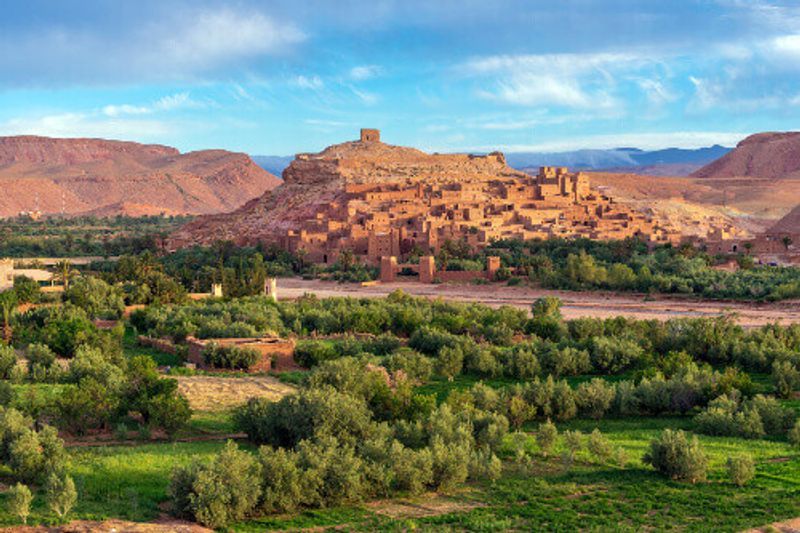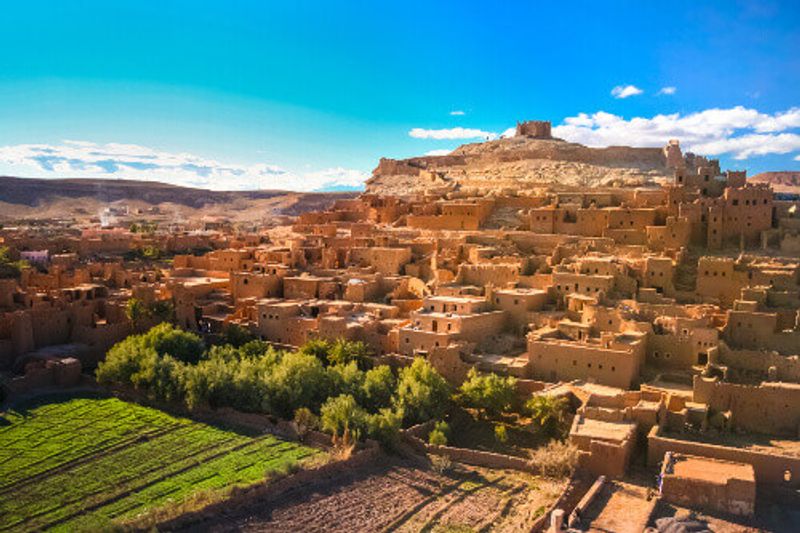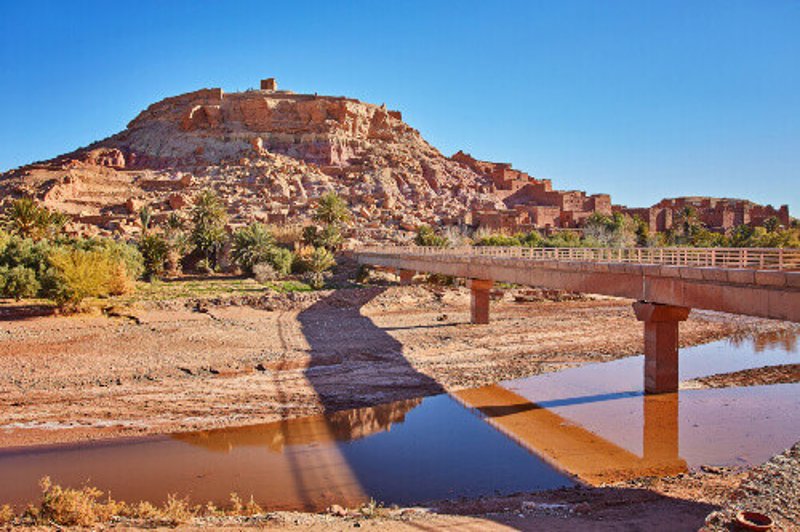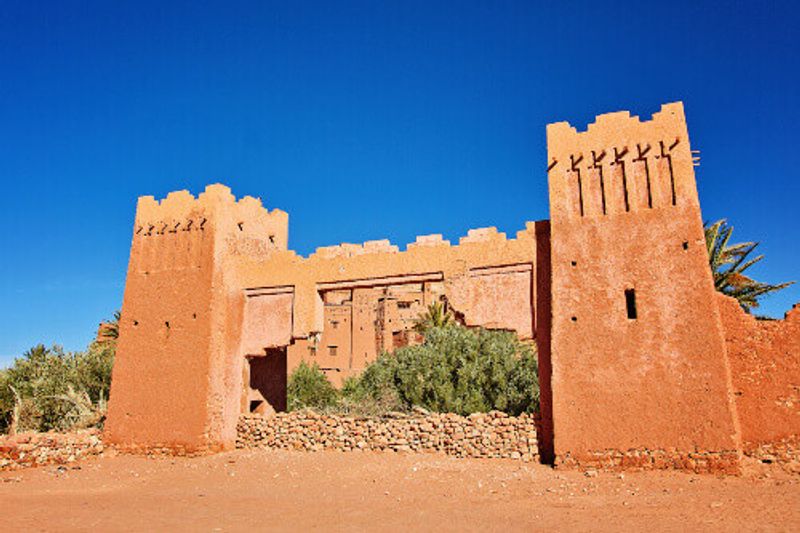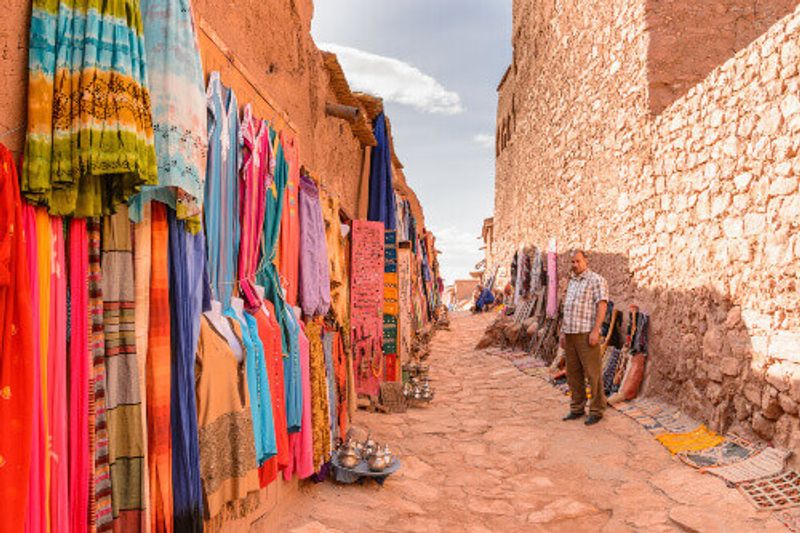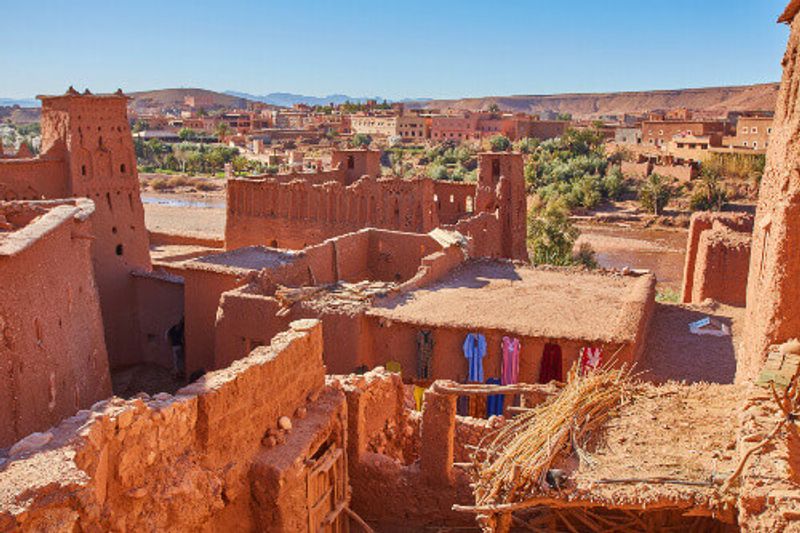UNESCO World Heritage protected, Aït Benhaddou is a cinema legend
Located in central Morocco at the base of the Atlas mountains lies the renowned Aït Benhaddou. It has featured as the time-worn backdrop of on-screen epics including Gladiator, Prince of Persia and Game of Thrones, and it’s easy to see why. Clay towers and earthen buildings fit together to form an enormous sand castle, decorated by swathes of date palms and olive groves. The cluster of buildings form a ksar, or fortified village protected by clay walls.
In ancient times, Aït Benhaddou served as a strategic trading post between the Sudan and Marrakesh. Traders following the trans-Saharan route would reach the city, bringing precious metals, slaves and salt; the currency of the ancient world. With wealth came new residents, and a prosperous town sprang to life. This community laid the foundations for Aït Benhaddou in the 12th century, with the ksar taking its current form over the course of another five hundred years.
Start your exploration along the dusty banks of the Ounila river. A bridge crossing separates Aït Benhaddou from the 'new town'. The relocation of residents across the river was necessitated by the fragility and preciousness of the ksar. And yet, Aït Benhaddou rises formidably up out of the earth, stark against the desert terrain. From the river, take in the view of the craggy landscape, the ksar’s imposing clay towers and the contrasting patches of lush green foliage. You will notice that these features have a curious effect, deterring would-be raiders whilst enticing the weary traveller with the promise of shade, water and a little bit of adventure.
After the bridge, follow the path and you will arrive at the entrance to a maze of narrow streets winding their way up to the summit. The path traces the city’s clay walls, punctuated by narrow windows used by archers in ancient times. The walls served as an initial layer of protection and were reinforced by defensive towers and a clever one-way gate.
Safe within the ramparts, and adorned by turrets and islamic art, each building stands flush against its neighbour. Stop a moment at the home open for display; a sort of living museum that typifies the living conditions and earthen construction of the modest ksar dwellings. In contrast, the kasbahs, or traders homes, are opulently decorated with arched doors and geometrical patterns made by the careful placement of clay bricks. The kasbahs wrap around a central courtyard, revealing tiny garden oases.
Allow yourself to get lost in the maze of stairways that rise abruptly to reveal another layer of dwellings. Along the way, you will pass a restored mosque, Jewish and Muslim cemeteries and a caravanserai, a roadside shelter where traders rested on route. Finally, at the hill’s plateau you will come to the agadir, or granary, enclosed in the city’s last line of defence. In times of distress, citizens would retreat here and observe the raiders on approach. Today, you will find the best view over the desert and the ksar below.
